
The importance of Louisiana in the War
between the States is often overlooked. Since New Orleans
controlled the mouth of the Mississippi River it was of vital
strategic importance to both sides. Union Captain David Farragut
succeeded in passing Confederate-held Fort Jackson and Fort St.
Philip at the mouth of the Mississippi leaving New Orleans wide
open to attack. The city
had no choice. They surrendered on April 28, 1862. Both Fort
Jackson and Fort St. Philip are not open to the public any
longer. For the traveler interested in following the Civil War
Trail there are a lot of places you want to visit in Louisiana.
New
Orleans Custom House is now the Audubon Insectarium, the
largest free-standing museum dedicated to insects in American.
Great to visit in its own right but the history encased in that
massive gray granite building with its combined Greek and
Egyptian Revival elements is amazing. First off the fact that it
took 33 years to complete. The main reason for that being
construction had begun in 1848 and didn't finish until 1881.
Plus there were numerous architects with their fingers in the
pot causing many redesigns. P. T. G. Beauregard was in charge of
the Custom House project when Louisiana seceded from the Union
and joined the Confederacy. He left to take command of the
troops and went to South Carolina to begin the takeover of Fort
Sumter that officially began the War Between the States.
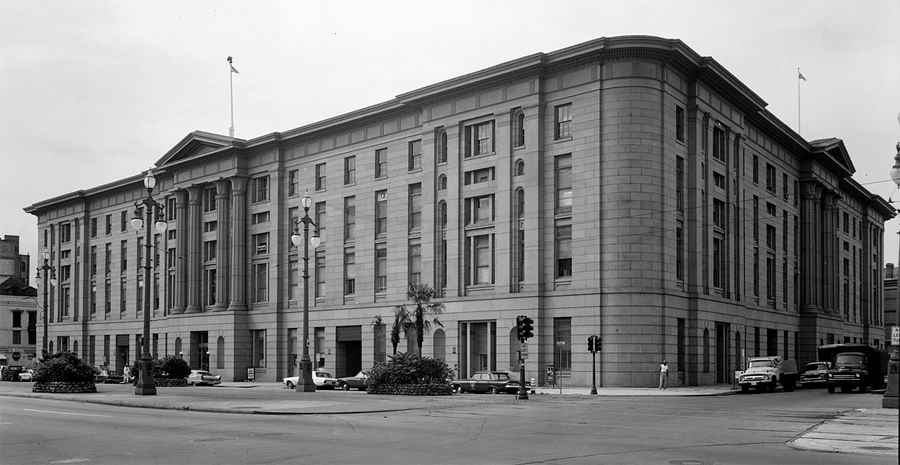 |
| New Orleans Custom House circa
1963. Credit LOC |
At this point, the Custom House became the
most important building in the city. It was used to build guns
and arms for both the army and navy. The first shop to be
commissioned was the gun carriage plant under the supervision of
Captain John Roy. John Roy was my great great grandfather so I
found this particularly interesting. The foundry he ran there
soon became of utmost importance to the South's war effort as
evidenced by the following quotes.
One local paper The Algiers
News Boy says, " John
Roy is the master mind by which all of the vast preparation of
canon in and around
the city have been superintended since the war broke out."
The New Orleans
Picayune quoted
Raphael Semmes, Captain of the
Sumter, that John Roy
"contrived most ingeniously, and constructed out of railroad
iron, one of the best carriages (or rather slide and circle) for
a pivot gun which I have ever seen."
The Washington Artillery Battalion is one
of the older militia units dating back to 1838
They served
in the Confederacy during the war and today, a park, located
between the river levee and Jackson Square, honors them. The
Civil War cannon is a model of a 136-year-old Parrott Rifle much
used in the Civil War.
 |
| The Washington Artillery
Monument |
Another site that cannot be neglected is
The Beauregard/Keys
House. Beauregard was the most important Confederate general
during the early months of the war. He and Davis did not get
along leading to his being passed over in favor of General
Bragg. Beauregard lived in this house from
1866 to 1868.
(Click for more about Beauregard House)
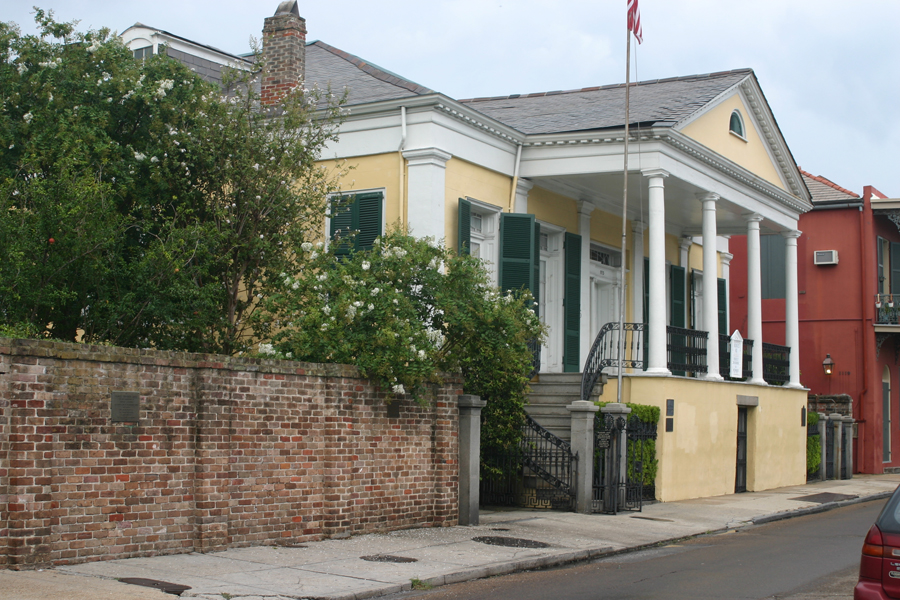 |
| The
Beauregard/Keys House |
Beauregard died in new Orleans in March
1893 and is buried in Metairie
Cemetery. It is one of New Orleans most famous above-ground
cemeteries. Along with General Beauregard.
Generals Richard Taylor and John Bell Hood rest there. It
has several monuments related to the War.
(See more about this cemetery)
 |
| The memorial to Washington
Artillery at Metarie Cemetary |
Another site that operated both before and
after the Civil War is
Old U.S. Mint. Built in 1838,
it became State property when Louisiana seceded. It is
the only mint that produced
both American and Confederate coins. For serious history buffs,
the Mint is a treasure house. It contains documents from 1584 to
present day in its Louisiana Historical Center Archives.
(For
more about the mint)
 |
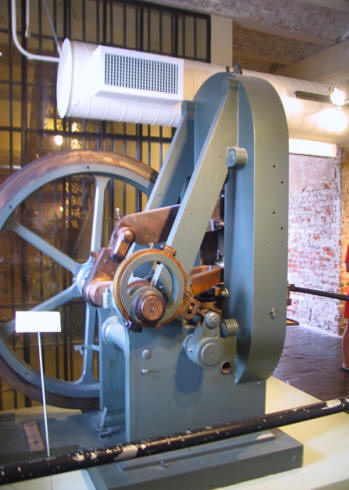 |
| Some of the
machinery used to make money for both the U.S. and the
Confederacy. |
Jackson Barracks was the home of Louisiana's militia units.
In 1861, Louisiana took control of the barracks but they only
held it for less than a year. In 1862, Union forces re-captured
it. Today it's still home to the National Guard. It houses The
Ansel M. Stroud, Jr. Military History and Weapons Museum, AKA
Jackson Barracks Military Museum. There's only one other
National Guard museum. At the outbreak of the Civil War, there
were only five divisions as the war progressed 982 military
units were formed. George
B. McClellan, Ulysses S. Grant, Robert E. Lee,
P. G. T. Beauregard and J.E.B. Stuart all were at Jackson
Barracks but definitely not at the same time.
Just a short distance down St. Bernard
Highway, you can visit Chalmette National Cemetery on the site
of Chalmette Battlefield where Andrew Jackson defeated the
British in another war. The cemetery for Union soldiers
was established in May 1864 and is the final resting
place of about 12,000 soldiers. The Grand Army of the Republic
erected a monument to honor their fallen soldiers.
Confederate Museum is
another must see spot for Civil War buffs.
(See info about
it here)
 |
| The Confederate Musuem |
Two churches in New Orleans have
significance in regard to Leonidas Polk, Confederate general and
former Episcopal Bishop of Louisiana.
Trinity Episcopal Church,
a Gothic Revival-style church which still has the old separate
seating gallery for the slaves, was consecrated by Bishop
Leonidas Polk in 1861. It contains a stained glass memorial
altar window dedicated to him as the first Episcopal bishop of
Louisiana. Leonidas Polk's remains are interred at
Christ Church Cathedral
located at 2919 St. Charles Ave.
Baton Rouge and The Florida Parishes
The
Pentagon Barracks and the
Old Arsenal were the
scene of a fierce battle on August 5, 1862 when Gen. John C.
Breckinridge tried to recapture the capital after it had been
taken by Union forces just after the fall of New Orleans in
spring of 1862. The Barracks now is apartments for state
lawmakers but the grounds are open to the public and the Capitol
Park Visitor Center next door contains a small exhibit related
to the battle.
Old Arsenal contains a more detailed
exhibit about the battle. Some of the
graffiti left by Union
soldiers is still visible.
Louisiana's Old State Capitol
after being captured by Union troops was used first as a
prison and then as a garrison for African-American troops. It
was burned during the occupation leaving only a gutted ruin and
later rebuilt. The magnificent dome and stained glass took my
breath away they are so beautiful.
 |
| The Old Capitol dome is truly
magnificent |
It is open to the public and offers a great
4D experience called "The Ghost of the Castle." The supposed
narrator of the film is Sarah Morgan Dawson, who lived in Baton
Rouge during the war. She wrote
Sarah's Story,
A Confederate Girl's
Diary in which she talked of her love of the old
Capitol. The exhibit was designed by a Disney designer and I
promise you will not be disappointed in it. Even better it's
free.
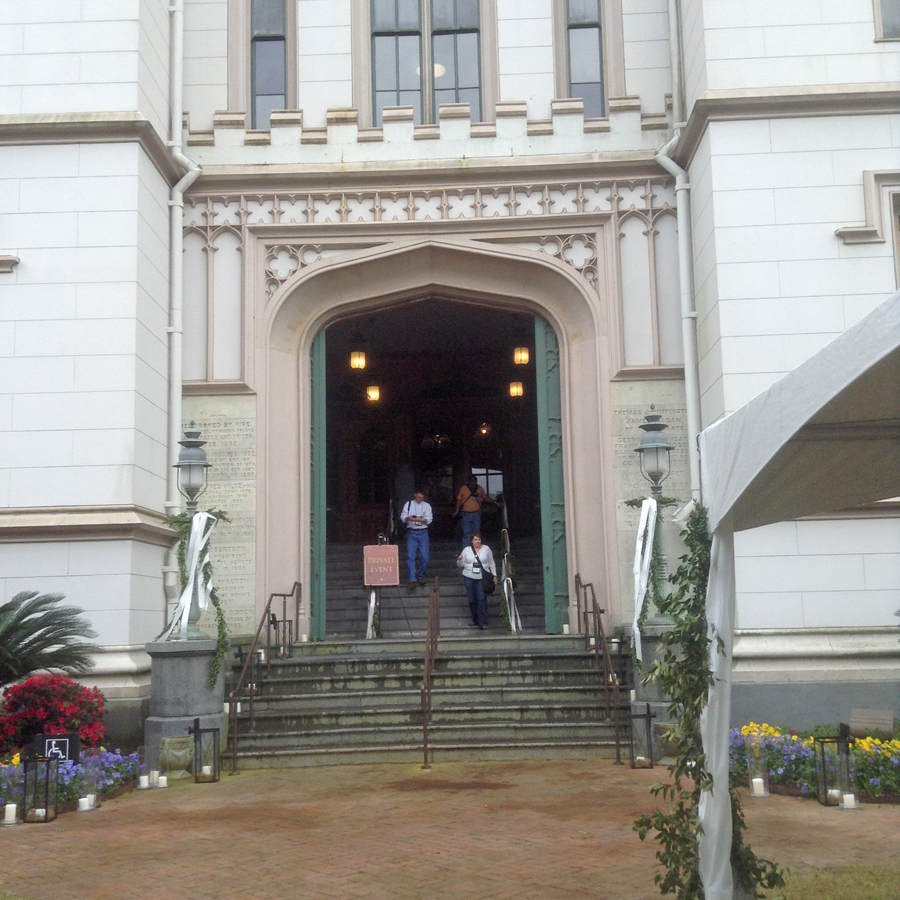 |
| Louisiana's
Old Capitol |
Capitol Park Museum is located in the same area. This museum
is a treasure. I could have spent days instead of the short time
we had allotted for it. It covers not only the era of the War
between the States but the entire history of Louisiana.
My favorite exhibit was the Mystery
Submarine. The story of the vessel is posted at the exhibit.
Little is know for sure about the submarine. It was found in
Lake Pontchartrain near the mouth of Bayou St. John in 1879. It
was shunted around various places eventually being filled with
concrete in a mistaken effort to preserve it. It was displayed
under the Presbytere arcade in 1957 and finally
transferred into
the care of the
State Museum system for restoration in December of 1999.
 |
| A visitor studies the mystery
submarine |
My personal contact with the submarine
began in the late 50s when I used to visit Jackson Square and
often would go look at and even touch the vessel. Later in life,
I was to discover my great-great-grandfather, John Roy's, diary.
The portion I discovered contains entries in his "Memorandum"
for all of 1861 and a portion of 1862. In reading I noticed an
entry from July 6, 1861 where he says he went to see the launch
of the "Gunboat Louisiana." He continues to say that he was on
board and was "somewhat surprised at the scary manner in which
she slipped into the water. I believe that her builder has made
the same mistake upon her that I made on my small boat…"
Now that is certainly no proof that the
"small boat" he refers to is this mystery submarine but some
historians do consider him a good candidate for the builder.
He refers to this boat
several times and mentions going out to Bayou St. John in the
dairy. You can see why the Mystery Submarine fascinated me but
it is a sure winner for anyone interested
in Civil War history.
The museum is filled with facinating
exhibits both Civil War related and historical in general.
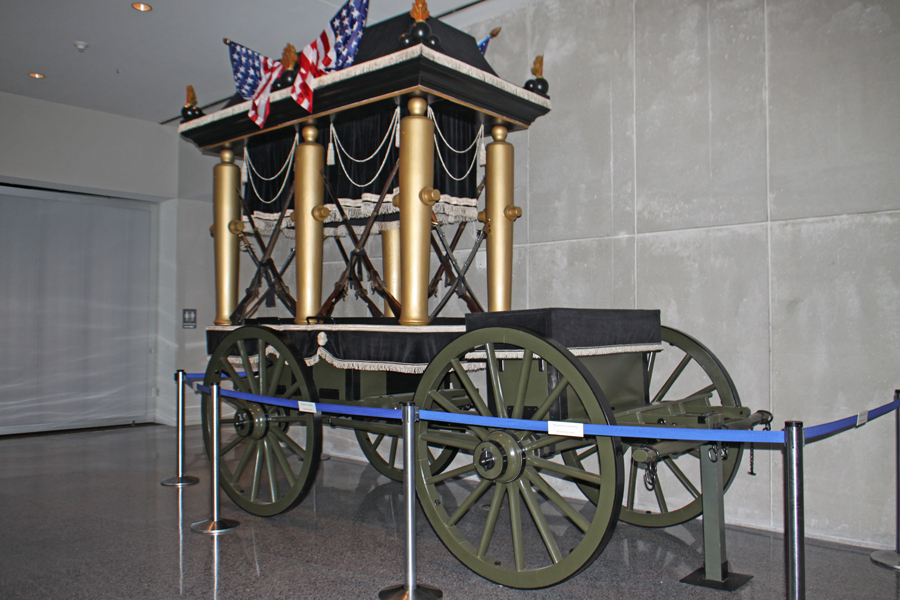 |
| Jefferson Davis's hearse at the
Capitol Park Mueum |
Port Hudson State Historic Site between Baton Rouge and St.
Francisville played a part in Grant's seige of Vicksburg. Port
Hudson as well as Vicksburg had to be captured to give the Union
complete control of the Mississippi River. There is a small
museum there and the site often has reenactments.
Central Louisiana / Red River Valley
Shreveport was the last stronghold of the
Confederacy. The last
Confederate flag was lowered here May 26, 1865 and replaced by a
United States Flag. The
Shreveport Confederate Monument stands on the courthouse
lawn to commemorate that fact. (Certainly not to glorify slavery
as some opponents who would like this work of art destroyed
argue.) Each corner of the monument depicts a Confederate
general. They are General Robert E. Lee, General "Stonewall"
Jackson, General P.G.T Beauregard and General Henry W. Allen who
was also Confederate governor of Louisiana. The courthouse
served as the capital during the waning years of the war.
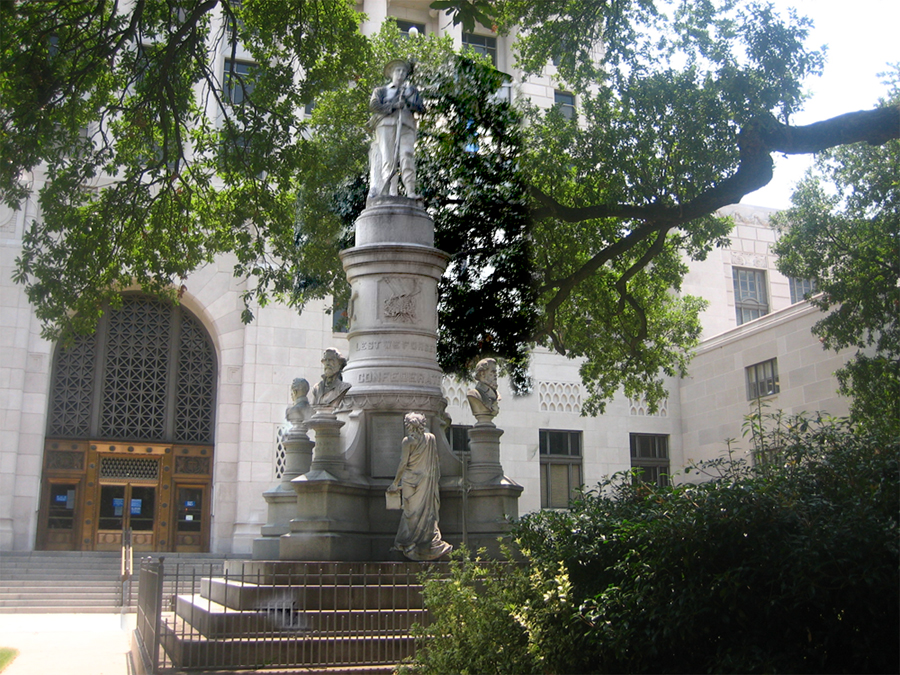 |
| Shreveport's Confederate
Memorial |
The commander of the Trans-Mississippi
Department CSA, General Kirby Smith, was based in Shreveport and
stayed at the home of Benjamin L. Hodge from 1863-65 .
Unfortunately the home was demolished in 1960 but there is a
historic marker noting the location of the residence.
Mansfield State Historic Site and Pleasant Hill were the
site of battle during the Red River Campaign. Mansfield State
Historical Site is
open to the public and operated under the Office of State Parks.
It has a museum and
various trails and
markers. Pleasant Hill, nine miles farther on Highway 175, is
private property but there are markers and memorials noting the
battle sites. They hold a re-enactment of the battle each April.
J.
Bennett Johnston Waterway Shreveport Visitor Center in
downtown Shreveport has a museum related to the history of the
Red River. One interesting exhibit there is a Civil War era
steamboat, Kentucky.
Although built as a pleasure boat, she was used by the
Confederate as a transport until June, 1862. Captured by the
Union it ran as an express mail boat between Memphis and
Cairo. After the war it
was returned to its owners and on sank June 9, 1865 in the Red
River. It was uncovered on dry land when the river shifted
course. The artifacts recovered tell the story of life during
that period.
There are many more sites in Louisiana that
tell the story of our nation's most bitter conflict. among them
are the many plantations that withstood the devastation. Each
has its own tale to tell so include as many as you can in your
travels.
Below is a partial list:
Nottoway Plantation in White Castle near Baton Rouge
is the largest extant antebellum plantation house in the
South
 |
|
Nottoway Plantation |
Rosedown State Historic Site outside St. Francisville.
Kent Plantation House in Alexandria, the oldest standing
structure in central Louisiana.
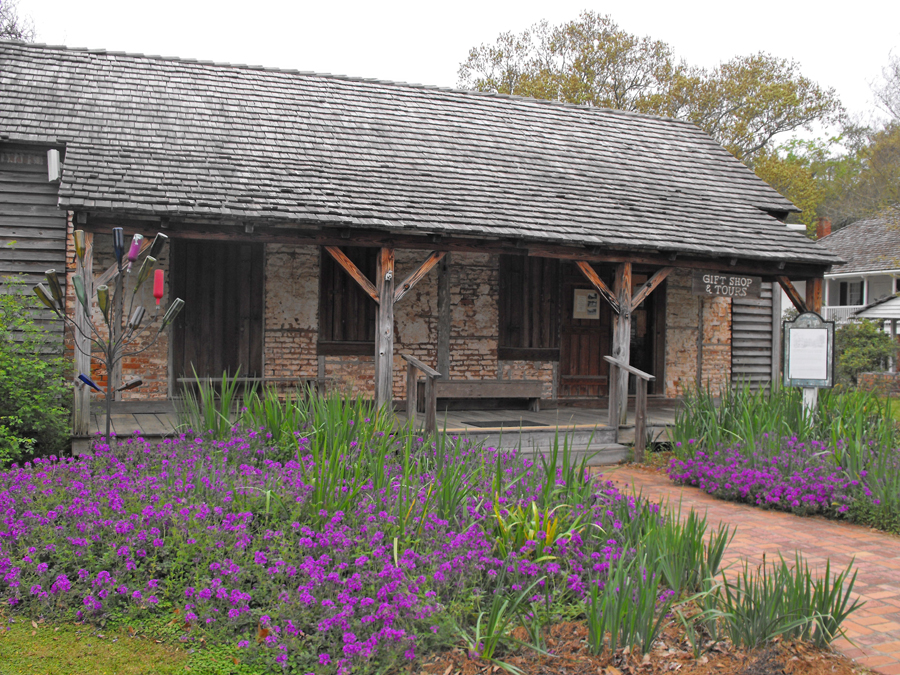 |
| One of the outbuildings at Kent
House |
Shadows-on-the-Teche in New Iberia survives possibly because
it served as headquarters for Union officers
Chretien Point Plantation in Sunset, near Lafayette was the
site of Battle of Buzzard's Prairie on October 15, 1863.
Supposedly spared because the owner was recognized as a Mason.
Frogmore Plantation and Gins near Ferriday is well preserved
and offers "Plantation Civil War Challenges and Changes" which
compares an Antebellum cotton plantation to a modern cotton
planbtatioin. It was selected by Rand McNally as a "Must See
Site" in the South/Southeast and by AAA Southern Traveler
Magazine as one of the top three favorite attractions in the
tri-states of Ark/La/Miss. It also won the Rural Tourism Award
for the State of Louisiana.
Winter Quarters State Historic Site near Newellton was a
plantation belonging to Dr Haller Nutt who also owned Longwood
in Vicksburg, MS. It was the only one of 16 plantations in the
area that was not destroyed during the Union invasion.
For more info:
Custom House
http://www.gsa.gov/portal/ext/html/site/hb/category/25431/actionParameter/exploreByBuilding/
buildingId/925
Beauregard/Keys House
http://www.bkhouse.org/
Metairie Cemetery
http://www.gonola.com/2013/05/06/nola-history-metairie-cemetery-in-new-orleans.html
Old Mint
http://www.louisianastatemuseum.org/museums/the-old-us-mint/
Christ church
www.cccnola.org
Trinity
www.trinitynola.com
Capitol Park, Baton Rouge
http://www.sos.la.gov/HistoricalResources/VisitMuseums/OldArsenalMuseum/Pages/default.aspx
Capital Museum
http://www.visitbatonrouge.com/listing/Capitol-Park-Museum-a-Louisiana-State-Museum/5040
Port Hudson
http://www.crt.state.la.us/louisiana-state-parks/historic-sites/port-hudson-state-historic-site/index
Submarine
http://en.wikipedia.org/wiki/Bayou_St._John_Confederate_Submarine
Port Hudson
http://www.crt.state.la.us/parks/ipthudson.aspx
Mansfield Site
http://www.crt.state.la.us/louisiana-state-parks/historic-sites/mansfield-state-historic-site/index
Shreveport
http://www.shreveport-bossier.org/things-to-do/attractions/galleries-and-museums/j-bennett-johnston-waterway-regional-visitor-center-825
|